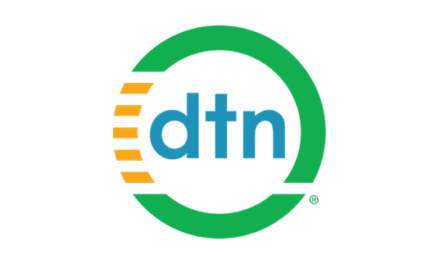The Focus Shifts to Accelerating Demand
- Petroleum prices rebound despite growth in U.S. and Saudi Arabian production
- Global demand responds to lower prices
- Seasonal trends are bullish for distillate and propane
- Winter propane prices appear to have formed an inverted head and shoulders pattern
Sincerely,
Elaine Levin, President
Powerhouse
(202) 333-5380

The Matrix
Just three weeks ago, The Energy Market Situation noted that oil had entered a bear market after dropping 20% from recent highs. Since then, the bulls have returned, pushing oil prices higher. Petroleum products have lead the charge. Both RBOB and ULSD futures have moved up over 16 cents from their June lows.
What changed The U.S. produced 9.37 million barrels per day of crude last week, the highest level so far in 2017. 765 rigs are in service, up slightly from the previous week. Even Saudi Arabia is producing more, pumping 10.07 million barrels per day last month, 12,000 barrels per day above the country’s OPEC quota. But, as the saying goes, low prices are the best cure for low prices. And low prices are spurring demand both here and abroad.
The Paris-based International Energy Agency (IEA) reported this week that global oil demand “dramatically accelerated” in the second quarter of 2017. The IEA predicts global oil demand will run 98 million barrels per day this year, a 1.5% increase over last year. Closer to home, U.S. gasoline demand is running close to 9.8 million barrels per day, approaching record levels. Distillate demand is strong despite a pullback in last week’s data, which included the Fourth of July holiday. The four-week average distillate demand is just shy of 4.1 million b/d, 332 barrels per day higher than this time last year.
Seasonality also favors the bulls in both distillates and propane. It is not uncommon for distillate prices to rally from mid-July through October. Propane prices tend to bottom in late June, and so far, we are right on schedule.

Seasonal Propane Index (2010 – 2016)
The lowest winter price for propane this year occurred during the end of June. The December propane futures contract bottomed with what appears to be an inverted head-and-shoulders pattern. This is a classic reversal pattern. After a decline to new lows, the market bounces, forming the first shoulder. Fresh selling then pushes the market to its lowest point before another rally, which forms the head. There is a final test lower that fails to make a new low, putting into place the second shoulder. When prices break above “the neckline,” the pattern is complete. The expectation is for prices to travel the same distance above the break of the neckline as the distance from the head to the neckline, putting the price objective at $0.69126.
Supply/Demand Balances
Supply/demand data in the United States for the week ending July 07, 2017, were released by the Energy Information Administration (EIA).
Total commercial stocks of petroleum decreased 3.9 million barrels during the week ending July 07, 2017.
Draws were reported in stocks of gasoline, fuel ethanol, K-jet fuel and residual fuel oil. Builds were reported in stocks of distillates, propane and other oils.
Commercial crude oil supplies in the United States decreased to 495.4 million barrels, a draw of 7.6 million barrels.
Crude oil supplies decreased in two of the five PAD Districts. PAD District 2 (Midwest) crude oil stocks fell 2.5 million barrels, and PAD District 3 (Gulf Coast) crude stocks declined 6.0 million barrels. PADD 1 (East Coast) stocks increased 0.2 million barrels, and PADD 5 (West Coast) stocks grew 0.8 million barrels. PAD District 4 (Rockies) were unchanged from the previous report week.
Cushing, Oklahoma, inventories decreased 1.9 million barrels from the previous report week to 57.6 million barrels.
Domestic crude oil production increased 59,000 barrels daily to 9.397 million barrels per day.
Crude oil imports averaged 7.610 million barrels per day, a daily decrease of 132,000 barrels. Exports rose 150,000 barrels daily to 918,000 barrels per day.
Refineries used 94.5% of capacity, an increase of 0.9 percentage points from the previous report week.
Crude oil inputs to refineries increased 103,000 barrels daily. There were 17.244 million barrels per day of crude oil run to facilities. Gross inputs, which include blending stocks, grew 181,000 barrels daily to 17.603 million barrels daily.
Total petroleum product inventories saw an increase of 3.7 million barrels from the previous report week.
Gasoline stocks decreased 1.6 million barrels; total stocks are 235.7 million barrels.
Demand for gasoline grew 81,000 barrels per day to 9.786 million barrels daily.
Total product demand decreased 2.267 million barrels daily to 19.958 million barrels per day.
Distillate fuel oil supply grew 3.1 million barrels to 153.6 million barrels. National distillate demand was reported at 3.858 million barrels per day during the report week. This was a weekly decrease of 465,000 barrels daily.
Propane stocks rose 1.7 million barrels; total stocks are 62.2 million barrels. Current demand is estimated at 764,000 barrels per day, a decrease of 397,000 barrels daily from the previous report week.
Natural Gas
According to the EIA:
Working gas in storage was 2,945 Bcf as of Friday, July 7, 2017, according to EIA estimates. This represents a net increase of 57 Bcf from the previous week. Stocks were 289 Bcf less than last year at this time and 172 Bcf above the five-year average of 2,773 Bcf. At 2,945 Bcf, total working gas is within the five-year historical range.
Futures trading involves significant risk and is not suitable for everyone. Transactions in securities futures, commodity and index futures and options on future markets carry a high degree of risk. The amount of initial margin is small relative to the value of the futures contract, meaning that transactions are heavily “leveraged.” A relatively small market movement will have a proportionately larger impact on the funds you have deposited or will have to deposit—this may work against you as well as for you. You may sustain a total loss of initial margin funds and any additional funds deposited with the clearing firm to maintain your position. If the market moves against your position or margin levels are increased, you may be called upon to pay substantial additional funds on short notice to maintain your position. If you fail to comply with a request for additional funds within the time prescribed, your position may be liquidated at a loss and you will be liable for any resulting deficit. Past performance may not be indicative of future results. This is not an offer to invest in any investment program.
Powerhouse is a registered affiliate of Coquest, Inc.
Was this helpful? We’d like your feedback.
Please respond to [email protected].
Copyright © 2017 Powerhouse, All rights reserved.









